Onsen
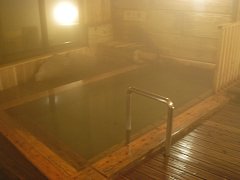 |
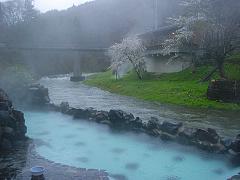 |
Types of hot springs
There are many types of hot springs to enjoy. The conventional hot spring is a hot water bath. Depending on the spring, different minerals are dissolved in the water, giving it different health benefits, colors and smells. Many hot springs contain sulfur and have an according odor.
Hot spring water baths come indoors, outdoors and in many different sizes. Outdoor baths are called rotemburo. While some baths are wooden or stone tubs, others are built to resemble or are actually natural hot spring pools. Some outdoor baths are spectacularly situated in the mountains, valleys or along rivers, lake or sea shores.
Besides conventional hot water tubs, a popular feature of larger baths are so called waterfalls, which comfortably massage your shoulders if you sit below them. Other bath types include sand baths, where bathers are buried in naturally heated sand, mud baths and steam rooms.
Ashiyu are shallow hot spring pools for bathing just your feet. They are found in the streets of many hot spring resorts and can be used free of charge.
Increasing in number are modern hot spring complexes, which offer a range of baths, massage services, saunas and sometimes conventional swimming pools, water slides, etc. In Tokyo, where there is a shortage of natural hot spring water on the surface, some new hot spring complexes are retrieving their water from a depth of more than a kilometer below sea surface.
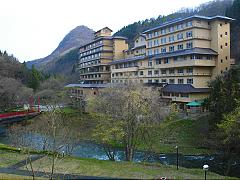 |
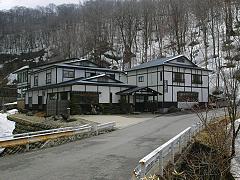 |
Onsen Ryokan
The ultimate hot spring experience is spending a night at an onsen ryokan, a Japanese style inn with hot spring baths. This is not only one of the most popular holiday activities among the Japanese, but is also highly recommended to any foreign visitor of Japan.
Onsen ryokan are found in various sizes in hot spring resorts across Japan. A typical onsen ryokan visit starts with a bath before dinner. The beautifully arranged Japanese style dinner, featuring local specialties, is either served in your tatami room or in a dining hall. Many guests like to take another bath before sleeping and before breakfast in the next morning.
You do not need to stay overnight at a ryokan in order to enjoy its baths. Many ryokan open their baths to the general public, typically during daytime only and against an admission fee of a few hundred yen. Besides ryokan, most hot spring resorts also have some public bath houses with hot spring water.
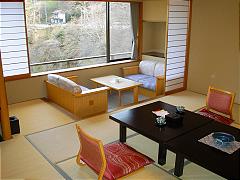 |
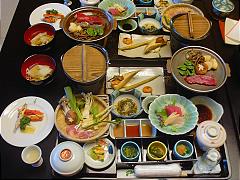 |
Nudity Issues
Hot springs in Japan are enjoyed naked, even though there are a few exceptions. While a majority of baths are gender separated, some are mixed. Mixed baths are usually found in more remote areas.
Furthermore, some establishments have both, gender separated and mixed sections, for example, in the case that there is just one spectacular outdoor bath, which the owner wants to make accessible to both genders.
For obvious reasons, many Japanese women, especially younger ones, avoid mixed hot springs, and it is not unusual that mixed pools are almost exclusively used by men.
If you do not feel comfortable naked in front of other people, you should inquire about “kashikiri” (private) baths, which are available at some ryokan. Private baths are sometimes also known as “kazokuburo“, lit. family baths.
Onsen and Tattoos
Kurama Onsen
The best onsen in the Kyoto area, Kurama Onsen is an easy 30-minute train trip north of Kyoto. Sitting in the outdoor tub surrounded by forested mountains is pure onsen bliss.
You can choose from the indoor tubs that include all kinds of extras, or the bare bones outdoor pools.
Opening hours:
10am-9pm
Nearest Transport:
3min free shuttle bus ride from Kurama Station, Eizan line
10min walk from Kurama Station, Eizan line
http://www.kurama-onsen.co.jp/index_e.html
Funaoka Onsen
Originally started as a ryori ryokan (Japanese-style accommodation serving meals) in 1923, Funaoka Onsen also featured a large bath facility. In 1947, it changed to a public bathhouse, which it remains to this day. Both the exterior and interior have exceptionally unique architecture, and the building is registered as a National Tangible Cultural Property as the first and sole public bathhouse in Kyoto.
Visitors will be astounded to see richly decorated ornaments everywhere- sophisticated Majolica tile designs, extensive wood carvings on the ceiling, and more. In contrast, the actual bath is simple and modern. What is surprising is the number of different kind of baths: Herbal, bubble, cypress bathtub, sauna, and more. You will take a while to pick which to enter first! The authentic open-air bath is also a must-try. Experience the classic public bath culture of Japan. They run a guesthouse nearby (only one group per night,) and guests are able to take as many baths at Funaoka Onsen as they wish.
Tenzan-no-yu Onsen
Tenzan-no-yu Onsen is a huge bath and spa complex on the west side of Kyoto. It’s one of the few onsen in Kyoto, and it’s well worth the trek across town to relax here.
In the indoor bathing areas, there is a wide variety of spacious tubs and individual washing areas. There is also a huge sauna, the largest we’ve seen anywhere. A few times a week, two attendants come into the sauna and perform a short manzai (Japanese standup comedy) routine. Then, they sprinkle fragrant water on the hot rocks and fan it over the patrons. The second time they come around, you can stipulate the number of times they fan you – 10 is a good number (after that, you’ll probably find it too hot).

